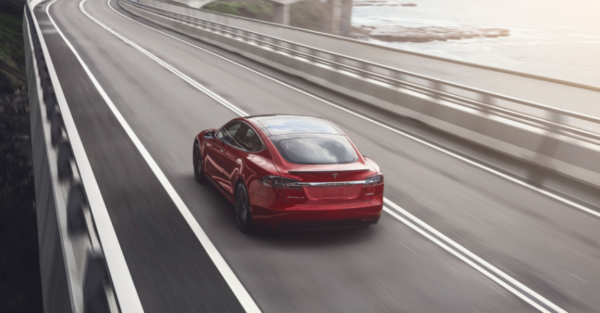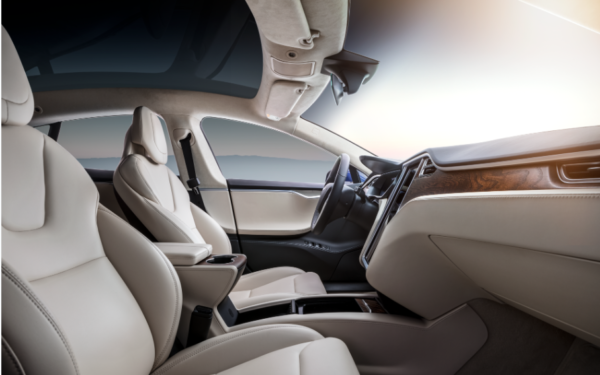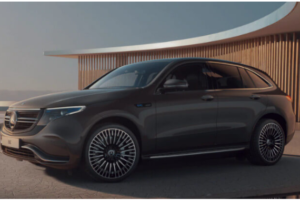Tesla’s attempt to present an electrical vehicle (EV) that could offer a genuine alternative to the reigning twin supremo of diesel and petrol vehicles appears to have (surprisingly) actually become an actuality.
I was very skeptical when I picked up this month’s test car, a Tesla Model S 100D, simply because I am and always have been a petrol-head! As a current owner of a Range Rover Vogue and a Ferrari 360 F1 Modena, I fancied myself to be in a unique position to judge both high end luxury quality and sport performance. My initial expectations from the Model S were of a dull and unexciting vehicle that was not going to light any fires of passion.
How wrong I was!
From the time I got behind the wheel of the Model S 100D, there was a subtle sense of refinement, power and willingness to obey any command given without fuss. The initial orientation from the sales staff at the Tesla Chiswick was very informative and straightforward, so it was easy for me to get going and enjoy what this car has to offer.

The main points of difference from a petrol/diesel car (I am reluctant to use the term “normal car” to describe petrol/diesel cars, as based on the current empirical evidence and direction, the EV is soon going to be the “normal” choice) are the four different modes of charging, the use of the deceleration to brake the car and the surreal sense of extremely quick acceleration within a cocoon of relative silence. Comparing this to the Ferrari 360 Modena, which is always a screaming song and dance when accelerating, I (surprisingly) got used to this silent ‘ninja’ style acceleration and found that it brings its own kind of adrenalin buzz. The 0-60 speed is more or less the same between the Ferrari 360 and the particular Model S 100D, which is around four seconds, but the way both these cars archive this appears to be different. The acceleration in the Tesla feels more confident. I got repeated kicks from accelerating off at traffic lights (within the road speed limit) and looking at the amazed looks on Porsche and BMW drivers when they eventually caught up with me: unless you are aware of the performance of a Tesla, it comes as a complete surprise.
(There is a faster version of this car, called the Model S P100D, which gets from 0 to 60 in under three seconds. The “D” means that there are two electric motors, front and rear, giving the “all wheel” drive capability).
I do not want to talk about the technical specification of the Model S in this review. The full tech-spec can be viewed if you click on the link at the bottom of the article. Instead, I am excited to talk about the car from the everyday driving prospective, which includes the impressive performance, and a host of technological assistance.
From a luxury point of view, I will go as far as to say that the Model S will easily compare to any top end marque currently on the market. Due to features such as air suspension and intelligent road mapping (which enables the car to remember all of the bumps and dips on a road that you have previously driven over, and adjust the suspension to accommodate it), the overall driving experience is uniquely satisfying. These refinements become obvious in the feel and the drive of the car. Even small details like the car recognising the proximity of the key owner, and automatically unlocking the door and extending the door handle out, makes a driver feel like there is a dialog with his/her vehicle.

This same luxury/expensive feel is prevalent in almost all aspects of the vehicle. I drove the car from London to Suffolk, where I live – a distance of 125 miles. I found that the controls for all the driving functions identical to any other luxury car and very ergonomically laid out. When I got out at my home, I was as refreshed as I would have been in my Range Rover Vogue.
I found that I got used to driving style of the Model S very quickly. My teenage children also thought that it was a perfect car to be seen in by their contemporaries, which I found refreshingly surprising (again)!
One of the bugbears of all EV vehicles is the charging. On one end, you can charge the Tesla using a normal three pin plug at home. On the other end, there is a network of Tesla Supercharges around the country. In between, you can either have a dedicated “home charger” (which costs about £1500) or the commercial Tesla chargers that you can find at a number of public places such as hotels, restaurants etc. My personal experience of charging the Model S was interesting. At the end of my drive to Suffolk, the battery showed a reading of 15%. I charged it overnight using a three-pin plug for about ten hours. This increased the battery capacity to 28%. I then drove to a hotel about ten miles away. When I got there the battery reading was down to 16%. I hooked the car to the charger at the hotel (not a supercharger) for 1 hour 10 minutes. In the one hour the battery capacity increased to 32%. I then drove another 12 miles to another hotel near Thetford, where I hooked the car to a Tesla SuperCharger for 1 hour 20 minutes. At the end of that time, the battery was reading 93%. On a full 100% charge, the expected range is circa 350 miles. In reality (as with any petrol/diesel cars) the actual available mileage will be lower, depending on the way you drive the car. On a full 100% charge, I managed to get 299 miles. The issue of sufficient charging points is a problem that is faced not just by Tesla, but all EV manufacturers. However, Tesla appears to be committed to increasing the number of charging points for their cars. Furthermore, it will become increasingly possible to charge all EV vehicles using other manufacturer’s charging points – in fact, Tesla already has the capability of charging using other non–Tesla charge points.
The cost of the Tesla Model S differs, depending on the options that you choose, from the paint, wheel size, battery capacity and internal fit etc. This cost varies from round £70,000 to £150,000 or more.
Overall, I was extremely pleasantly surprised by my experience with the Tesla Model S 100D, and I might even be a convert. I personally will consider buying a Model S when it is time to change my Range Rover!
(Technical Specification link:- www.tesla.com/presskit)



